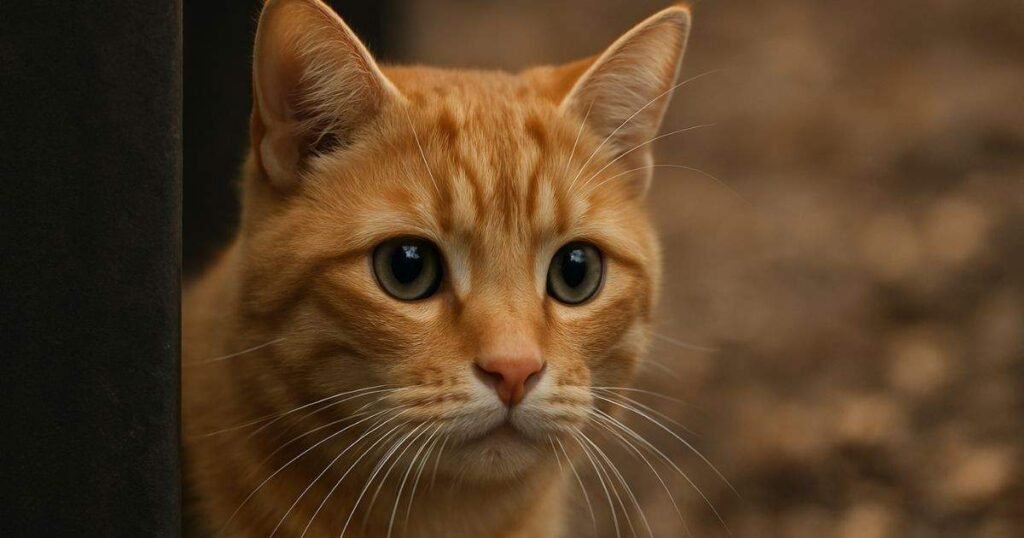Curiosity Killed the Cat Full Quote: What It Means
Origin of Curiosity Killed the Cat Full Quote
The curiosity killed the cat full quote has pretty old roots, though most people don’t know that. It didn’t start off the way we say it now. Initially, people said “care killed the cat” back in the 1500s, where “care” meant things like worry or stress—not curiosity. Over the years, the wording shifted, and by the early 1900s, “curiosity” took its place. That version caught on fast. A lot of folks also forget the second part—“but satisfaction brought it back”—which kind of changes the whole meaning. It stops being just a warning and instead feels like a reminder that curiosity can be worth it, even if it’s risky.
Modern Meaning Behind the Phrase
These days, when someone says the curiosity killed the cat full quote, they’re usually hinting that you should probably back off a little—like when you’re asking questions that might stir things up. It’s meant to be a polite warning. But when the second half is added—“but satisfaction brought it back”—it gives the phrase a whole new vibe. Instead of just being about danger, it kind of praises curiosity in a way. It shows that being curious can lead to answers, even if it’s uncomfortable at first. In today’s world, the quote reminds us to be mindful of how we ask—but not to be afraid of asking at all.
Must Read: Bruno Mars racial background: Sparks Fierce Debate
Curiosity Killed the Cat: Full Quote in Literature
Famous Literary Uses of the Quote
- Early 20th-century plays: Woven into conversations to caution against bold moves.
- Mystery novels: When digging too deep, it starts to stir trouble.
- Crime fiction: A subtle hint that not every lead is worth chasing.
- Satire: Pokes fun at the stubbornness of nosy characters.
- Children’s literature: Shapes simple lessons about safety and limits.
- Romance stories: They mirror the emotional risks that come with love.
Symbolism and Interpretations in Books
In many stories, the curiosity killed the cat full quote is more than a quick warning — it’s a way to explore how curiosity can tip into danger. Writers often use it to show the restless urge to know more, even when it might hurt. In mysteries, it fuels a hero’s determination to uncover the truth despite every red flag. In tragedies, it hangs in the background, quietly pointing to a fall that feels inevitable. In romance, it becomes a softer image, showing the gamble of trusting your heart. Its adaptability is why it continues to find a place in so many kinds of books.
Curiosity Killed the Cat Full Quote and Life Lessons
How the Quote Applies to Real-Life Situations
In life, the curiosity killed the cat full quote is a quiet nudge to stay curious, but not careless. Asking questions and exploring new things can open doors, yet pushing too far can cause more harm than good. We’ve all seen moments where a little extra digging led to tension, awkwardness, or even danger. Whether it’s in friendships, family matters, or work, there’s wisdom in knowing when to pause. The saying doesn’t ask us to ignore our curiosity, only to guide it wisely. When used well, curiosity builds knowledge; when overused, it can invite problems we never needed.
Moral Values Hidden in the Full Quote
The Curiosity Killed the Cat full quote holds simple but lasting morals. It speaks about thinking ahead before acting and choosing paths that won’t harm us or others. It teaches the importance of respecting limits, whether personal or social. There’s also patience woven into its meaning — understanding that some answers will come naturally in time, without forcing them. This saying has lasted because it captures a universal truth: curiosity is a gift, but without care, it can turn into a risk. The balance between seeking and stepping back is what makes the lesson timeless.
Curiosity Killed the Cat Full Quote: Misconceptions & Myths

The Misunderstood Meaning of the Quote
People often hear the curiosity killed the cat full quote and take it as a strict order to quit asking questions. That’s not the point. The saying initially warned about pushing curiosity too far, the kind that can land you in trouble you didn’t see coming. Curiosity, in itself, is what fuels learning, sparks ideas, and gets us moving toward new opportunities.
The problem shows up when it crosses into risky or intrusive territory. Somewhere along the way, the phrase got twisted into a negative blanket statement, as if curiosity is always bad. In reality, it’s more of a gentle nudge — be curious, but know your limits. That balance is what turns curiosity into a strength instead of a stumbling block.
Myths That Changed the Original Intent
A handful of myths have completely reshaped how the curiosity killed the cat full quote is viewed today. One big one claims the phrase warns against any curiosity, when it singles out the reckless kind. Another insists it was invented to keep children in line, yet historical uses show it popping up in adult conversation, literature, and speeches long before that idea stuck. There’s also the belief that it has no positive spin, ignoring the fact that it encourages safe, mindful exploration. These misunderstandings have made the phrase sound colder and stricter than it is. At its heart, it’s still an invitation to explore — just with a bit of common sense in your back pocket.
Curiosity Killed the Cat Full Quote: Cultural Perspectives
How Different Cultures Interpret the Quote
The curiosity killed the cat full quote takes on different shades depending on where you hear it. In some countries, it’s a sharp caution — a way of saying “don’t go poking around unless you’re ready for what you find.” In others, it’s less about fear and more about balance, knowing when curiosity pushes you forward and when it digs you into a corner. Certain traditions treat curiosity as a gift, but one that needs to be paired with patience and respect.
Across much of Asia, timing is seen as key — ask too soon and you might close doors instead of opening them. In Western contexts, the tone often leans toward daring, encouraging people to think twice before leaping in. However, it’s told, the core message is steady: curiosity can open doors, but not every doorway is worth stepping through.
Examples from Global Folklore and Proverbs
All over the world, bits of old wisdom echo the spirit of the curiosity killed the cat full quote. In Japan, there’s talk of “opening a door to a dark room,” a quiet reminder that not every mystery is worth rushing into. Africans sayings often stress asking questions with purpose, not just for the thrill of it. In the Middle East, the phrase “don’t poke the lion’s den” offers a vivid warning against stirring up danger.
Russian proverbs keep it plain: “Curiosity is the first step to trouble.” Each of these sayings carries its cultural seasoning, shaped by local history and values, yet they share the same heartbeat — curiosity is a force, but it works best when guided by care and awareness.
Curiosity Killed the Cat Full Quote: Practical Advice
How to Balance Curiosity and Caution
The curiosity killed the cat full quote isn’t there to scare people away from asking questions — it’s more of a nudge to stay thoughtful about how we search for answers. Curiosity is what fuels invention, creativity, and personal progress, but it can also pull us into awkward or risky spots if we don’t keep it in check. The real trick is knowing when to dig and when to break. That means watching the mood, reading the room, and thinking about how your actions might come across. Often, the problem isn’t the question itself, but the way or time it’s asked.
The right moment can turn an awkward inquiry into a welcome conversation. Respect for personal, cultural, and workplace boundaries keeps curiosity from turning into overstepping. Having a clear purpose for asking — instead of chasing every random thought — helps you stay focused. When curiosity is mixed with patience, empathy, and self-awareness, it becomes a bridge to understanding, not a path to trouble. This old phrase isn’t about closing the door on learning, but about opening it slowly so that what you find helps instead of harms.
Tips to Avoid the Dangers Warned by the Quote
- Take a breath before speaking or acting — make sure your curiosity serves a real purpose.
- Ask yourself whether the answer will help you or others, or if it’s just for the moment’s thrill.
- Pick the right time and place, as even good questions can fall flat in the wrong setting.
- Respect personal boundaries and cultural expectations to avoid discomfort.
- Test ideas on a small scale before committing to bigger moves.
- Don’t follow every question unthinkingly — scattered curiosity wastes energy.
- Think through possible outcomes, good and bad, so you’re ready for either.
- Seek facts from credible sources instead of rumours.
- Keep empathy in mind, considering how your curiosity might affect others.
- Learn to walk away from specific questions; sometimes, not knowing is the safest choice.
For more informative and interesting articles visit: royallmagazine.com
Curiosity Killed the Cat Full Quote: FAQs Answered
1. What does “Curiosity killed the cat full quote” really mean?
This phrase warns against unnecessary risk-taking or poking into matters that might lead to trouble. It’s often used when someone is asking too many questions or exploring something they’re better off leaving alone. However, in its extended form — “Curiosity killed the cat, but satisfaction brought it back” — the meaning changes, suggesting that curiosity isn’t always bad if it leads to learning or closure.
2. Where did the full quote come from?
The original byword appeared in the 16th century as “ Care killed the cat, ” meaning solicitude or anguish could be dangerous. Over time, “ care ” shifted to “ curiosity ” in the early 1900s. The more extended version with “satisfaction brought it back” began appearing later, softening the warning and turning it into a more balanced statement.
3. How is the full quote different from the short version?
The short version only delivers a cautionary tone, while the full version adds a twist. The addition of “satisfaction brought it back” suggests that curiosity, if fulfilled and not reckless, can be beneficial. It’s a reminder that seeking answers isn’t always dangerous — it depends on the situation.
4. Is this phrase still relevant today?
Absolutely. In our information-driven world, curiosity drives discovery and innovation. But just like centuries ago, it can also lead to unnecessary risks if not balanced with caution. The key is knowing when curiosity is helpful and when it’s leading into risky territory.
5. Can this quote be used in everyday conversations?
Yes, people often use it humorously when someone is being a bit too inquisitive. It can also work as a gentle reminder to think twice before digging into something that might not have a pleasant outcome.
Curiosity Killed the Cat Full Quote: Final Thoughts
In the end curiosity killed the cat full quote is “Curiosity killed the cat, but satisfaction brought it back” reminds us that curiosity itself is not the enemy — it’s how we use it that matters. The first part warns of the dangers of reckless investigation or poking into matters that could lead to trouble. The second part, often forgotten, reassures us that when curiosity is balanced with purpose and knowledge, it can lead to fulfilment rather than harm. This timeless phrase serves as both a caution and an encouragement, teaching us to explore wisely, think critically, and seek answers with both courage and care.



